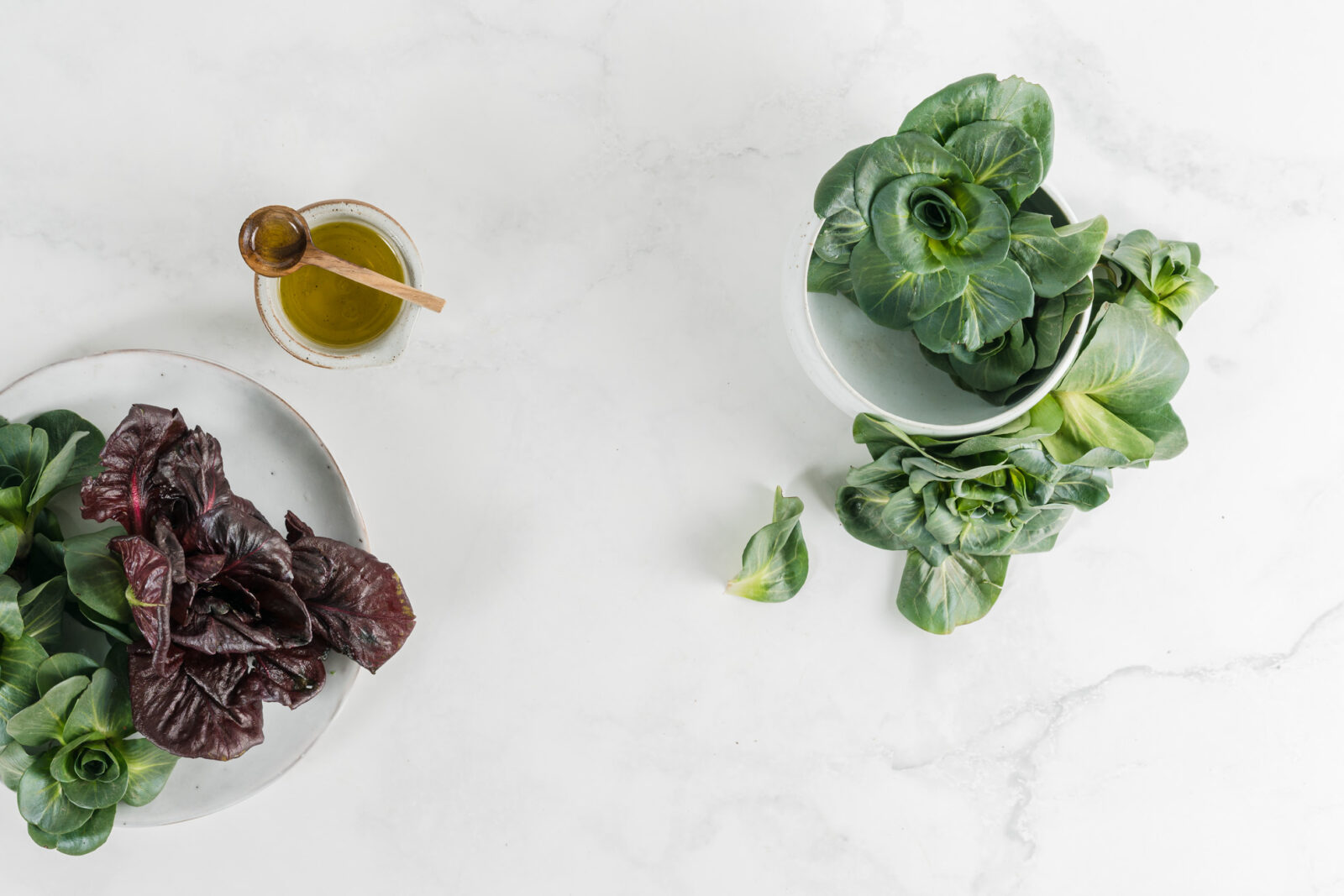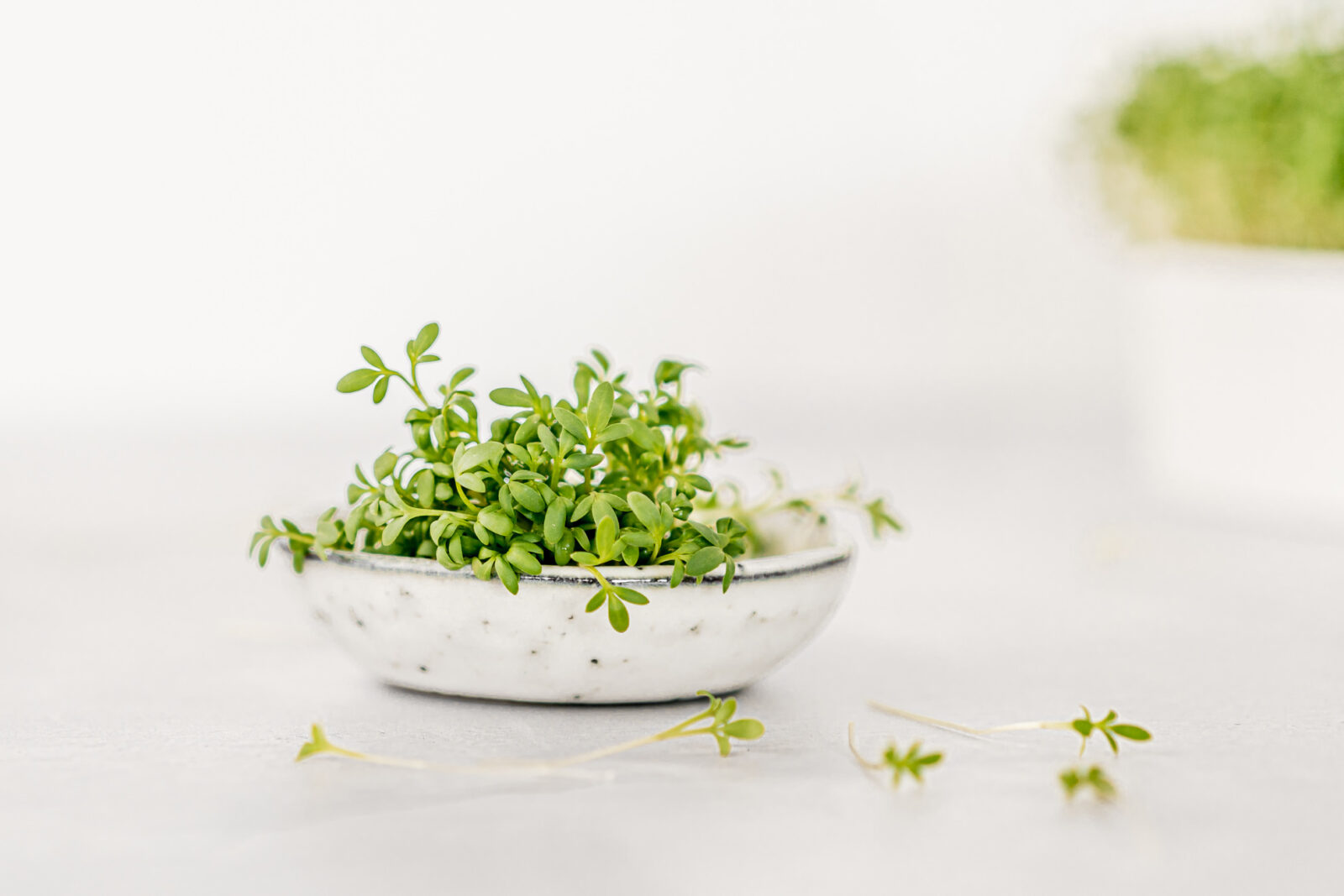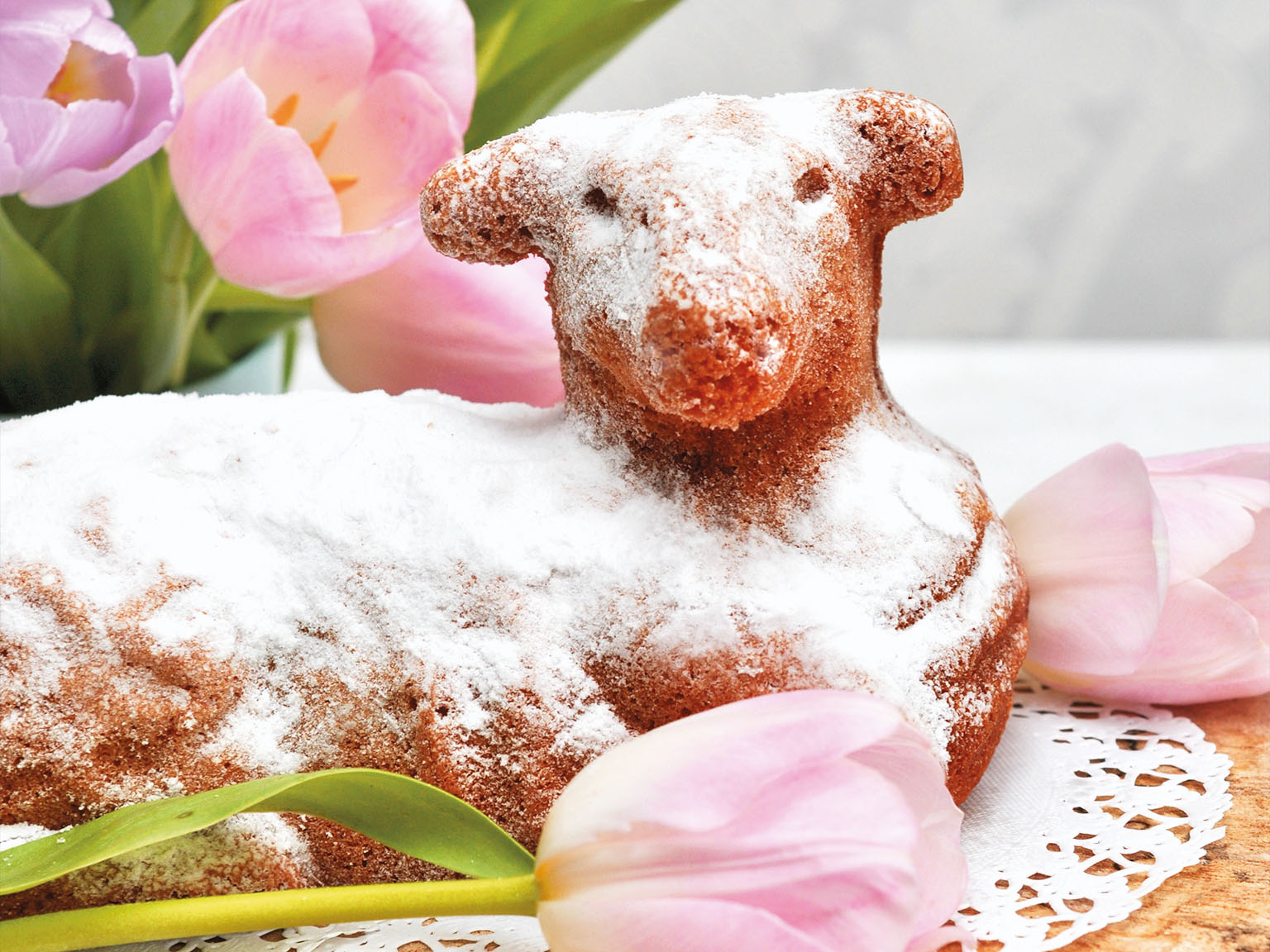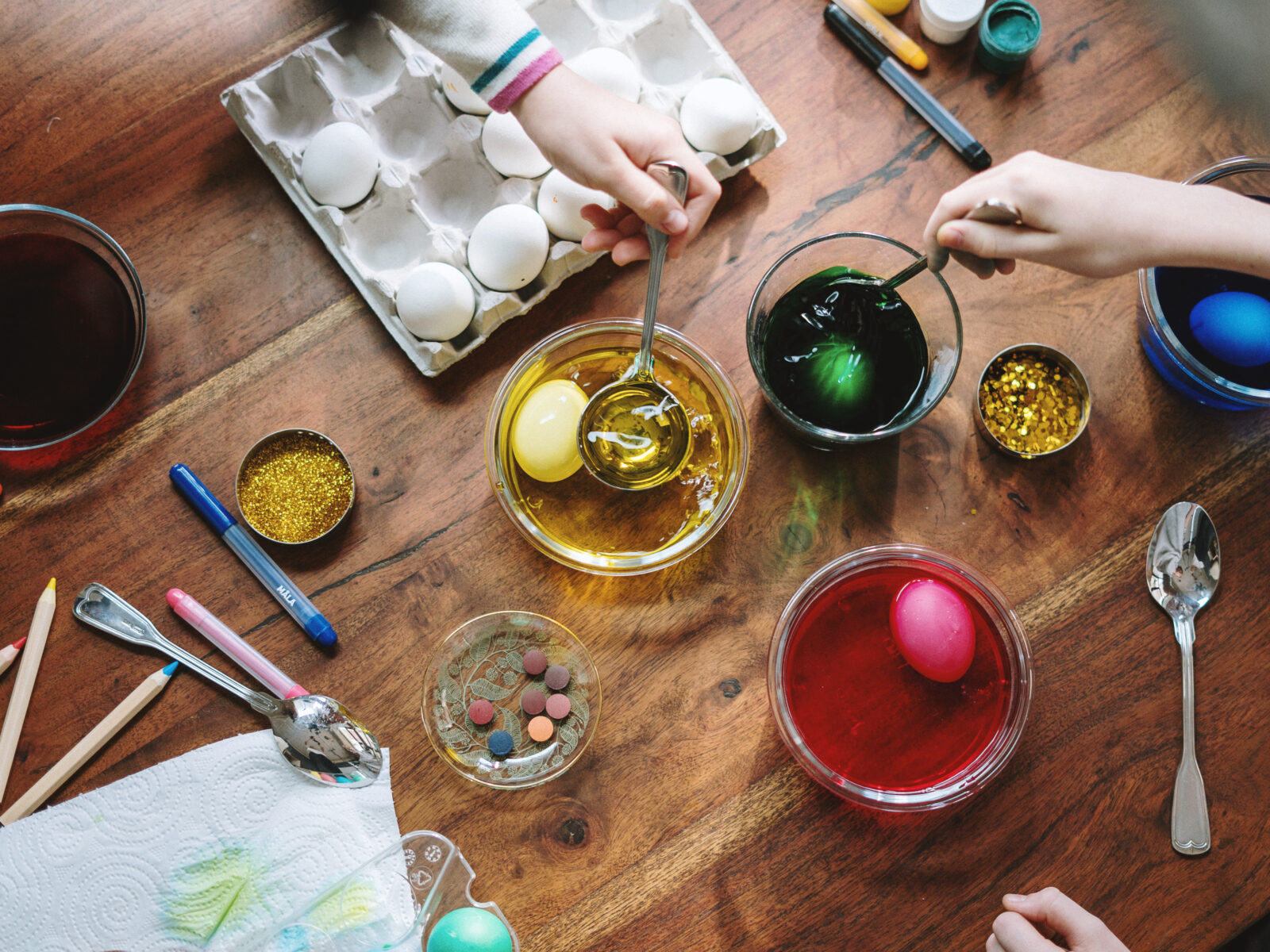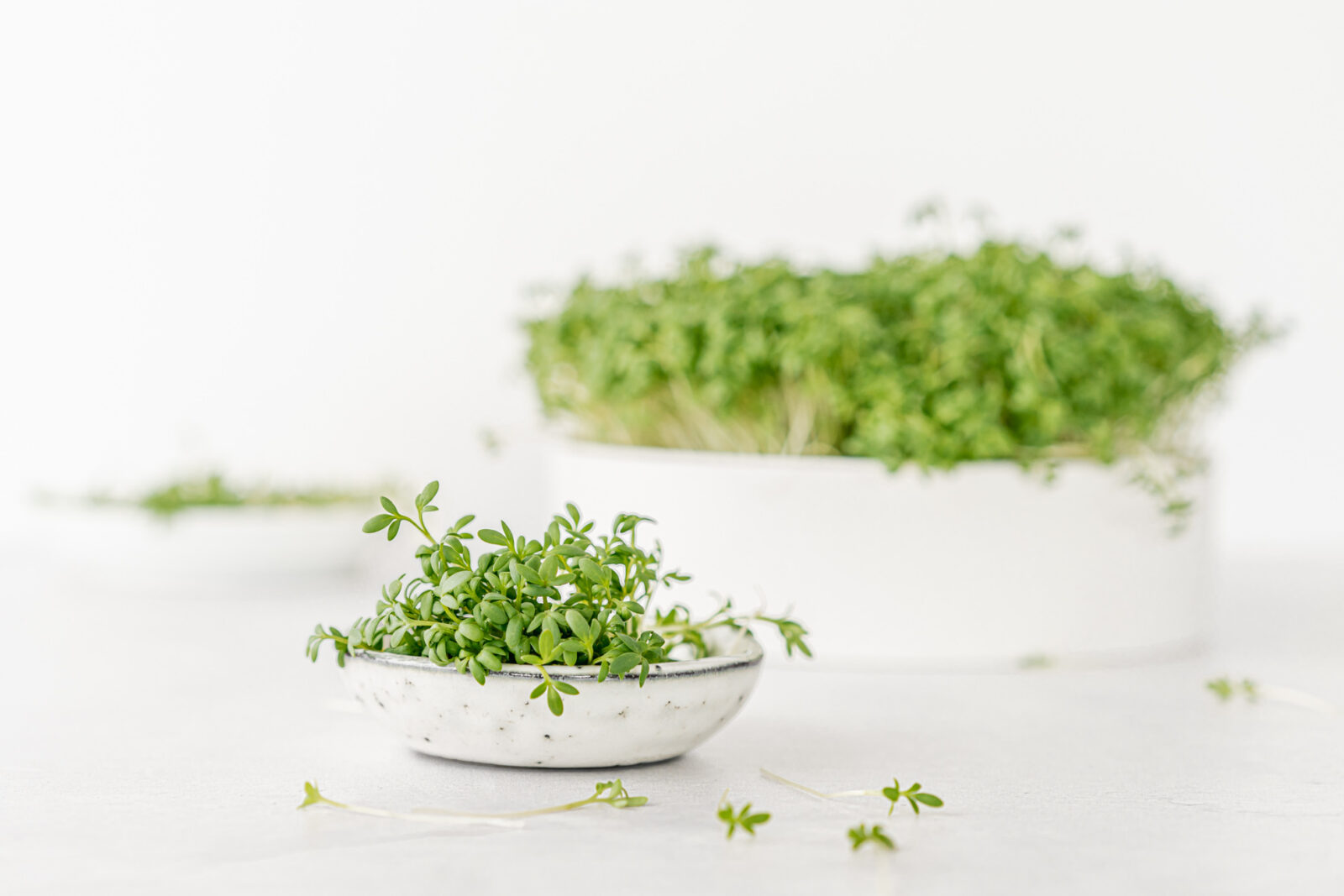
Watercress is often known as a garnish. People in the old days couldn’t imagine dishes without it – a buffet with no cress wasn’t complete. It would also give a certain aesthetic appeal to sandwiches and mayo salads.
However, times have changed. Today cress salad is seen as an integral part of a dish. Or it can take center stage. Eventually, people got a taste for watercress and its unique flavour.
Cress has small, dark, rounded leaves that look really beautiful and taste so refreshing. Eat it raw in salads with daikon. Or pound into a pesto. Or blend into smoothies with pumpkin seeds.
Watercress with a peppery bite or more blend
Watercress has a peppery bite and grassiness. That makes it ideal for many dishes. This leafy vegetable is a member of the mustard family, hence its sharpness.
However, bear in mind that once cooked, the pepperiness of the salad decreases. It leaves only a distinctive vegetable note.
So if the tingling sensation is what you are after, then watercress is better eaten raw. Also, note that cultivated watercress is available all year round. But it’s less spicy than the wild, the one that appears with the first days of spring.
Cress for the mustardy feel
Let’s whip up a simple salad. You’ll need
- a large heap of cress
- 1 peeled and chopped orange
- 1 sliced avocado
- 2 tbsp of dried cranberries
For the dressing:
- 2 tbsp orange juice
- 2 tbsp lemon juive
- 2 tbsp olive oil
- 1 tsp Dijon mustard
- 1 tsp honey
For the dressing, mix all ingredients together – it’s all you need for your divine dressing! Then add the other ingredients above to make a refreshing salad.
Cress without the peppery bite
Don’t like the mustardy spirit of the watercress? Not a big problem! You can always cook it away in soups or stir-fries.
Speaking of which, let’s introduce you to a common Chinese dish. It uses only a couple of ingredients but brings so much joy to the table.
Peel and smash with a knife 3-4 cloves of garlic. Heat a big skillet or a wok (if you are a proud owner of one). Add 2 tbsp of olive oil and warm it up a little.
Add the garlic and sauté it for 2-3 minutes. Then throw in the cress (two bunches will be enough). Wait until wilted and stir it until it’s fully cooked. Serve as a side dish on top of warm bread.

